When I shared this morning in my book-club discord that today’s spice was anise seed, one of the first comments was ‘the most controversial spice of them all!’ which, given the flak and teasing on yesterday’s Pumpkin Pie Spice, is saying something!
Not everyone likes licorice, of course. In fact, it really seems to be a love-it-or-hate-it flavor. Anise seed (not to be confused with Star Anise, which flavors Pho, among other things) is a sweeter, milder licorice than licorice root itself is, at least in my opinion. I love it. My husband… does not. Which is why today’s recipe using this spice is sheer self-indulgence all the way (without breaking my diet!). I got complicated, because I could.
Inspired in part by Victorian seed cakes, and by flourless cakes that are more friendly in general to low-carb adaptations, I whipped up this and hope it will turn out well… you’ll know by the end of the blog!
Anise Seed Cake
1 1/2 c Almond flour
1/2 c coconut flour
1 1/2 tsp baking powder
1/2 tsp baking soda
4 eggs, separated
1/2 c tahini
2 tsp anise seeds, ground
1 tbsp dried lemon peel, finely chopped
1 heaped tbsp dried rose petals
1/2 c Brown Swerve Sweetener (or brown sugar, in a 1:1 replacement)
1/4 c granulated xylitol (or granulated sugar in a 1:1 replacement)
1/2 c olive oil
3/4 c water
1/4c sesame seeds plus some for decoration
1/2 tsp orange blossom water
Preheat oven to 350F
Separate eggs, setting whites aside in a scrupulously clean bowl.
Grind the anise seeds in a mortar, or with a spice grinder.
Mix together the dry ingredients. Mix the wet ingredients into the dry. Grease two 8” cake pans, placing a parchment paper round in the bottom of this. Sprinkle sesame seeds on this, which will wind up on the tops of the cakes when you turn them out.
Beat the egg whites until stiff peaks appear. Fold them into the batter carefully, but completely. Pour this stiff batter into the pans, smoothing it out to the edges. Place into the oven to bake for 30-40 minutes until cake center is firm to the touch and edges are browned lightly.
Personally, I don’t see the need to frost or glaze these. If I did, I’d thin a little more than a tablespoonful of honey by warming it with a teaspoonful of lemon juice and perhaps a little more of the anise seeds (a quarter teaspoonful) and drizzling that over the top of the slightly warm cakes before slicing and serving with strong spiced tea.
Fresh out of the oven… and I did go grab my good camera. It smells so good!
And the survey of one says… wow. I’m making this again. It is more than I expected, has a fantastic crumb for a flourless cake, being light and fluffy without being a bit dry. The flavor is sweet but not overly sweet - this isn’t cake-mix level of sugary - and deeply complex. The anise seed comes through in fragrance and taste, supported by the lemon and sesame along with the nuttiness of the flours. Even my husband asked for a bite and said, as his eyebrows rose in surprise, that it worked far better for him than he would have thought, since it’s more than one flavor he doesn’t usually care for.
One bonus, and something I was designing the flavors towards, is that I can’t taste the sweeteners as anything besides ‘sweet’. Generally, they have a noticeable aftertaste or ‘off’ taste to me, so I try to work around that by using complementary flavors that mask it - here, that’s the tahini with it’s trace of bitterness, I think. Given the anise makes the sensation of sweet on it’s own, I also kept the level of added sweeter down to a minimum, and it works quite well. This would be simply amazing with a honey-lemon glaze and… oooh! Thin candied slices of lemon, or orange, on top! Super thin, otherwise they are objectionably chewy, but they would dress up the layers and make it more elegant than the simple tea cake it currently is. You could, I suppose, fill the layers with lemon curd and top it off with a cream cheese frosting but that would be gilding the lily.
I’m so excited about the rest of this month! I’m very glad you’re coming along with me on this journey of spice explorations.





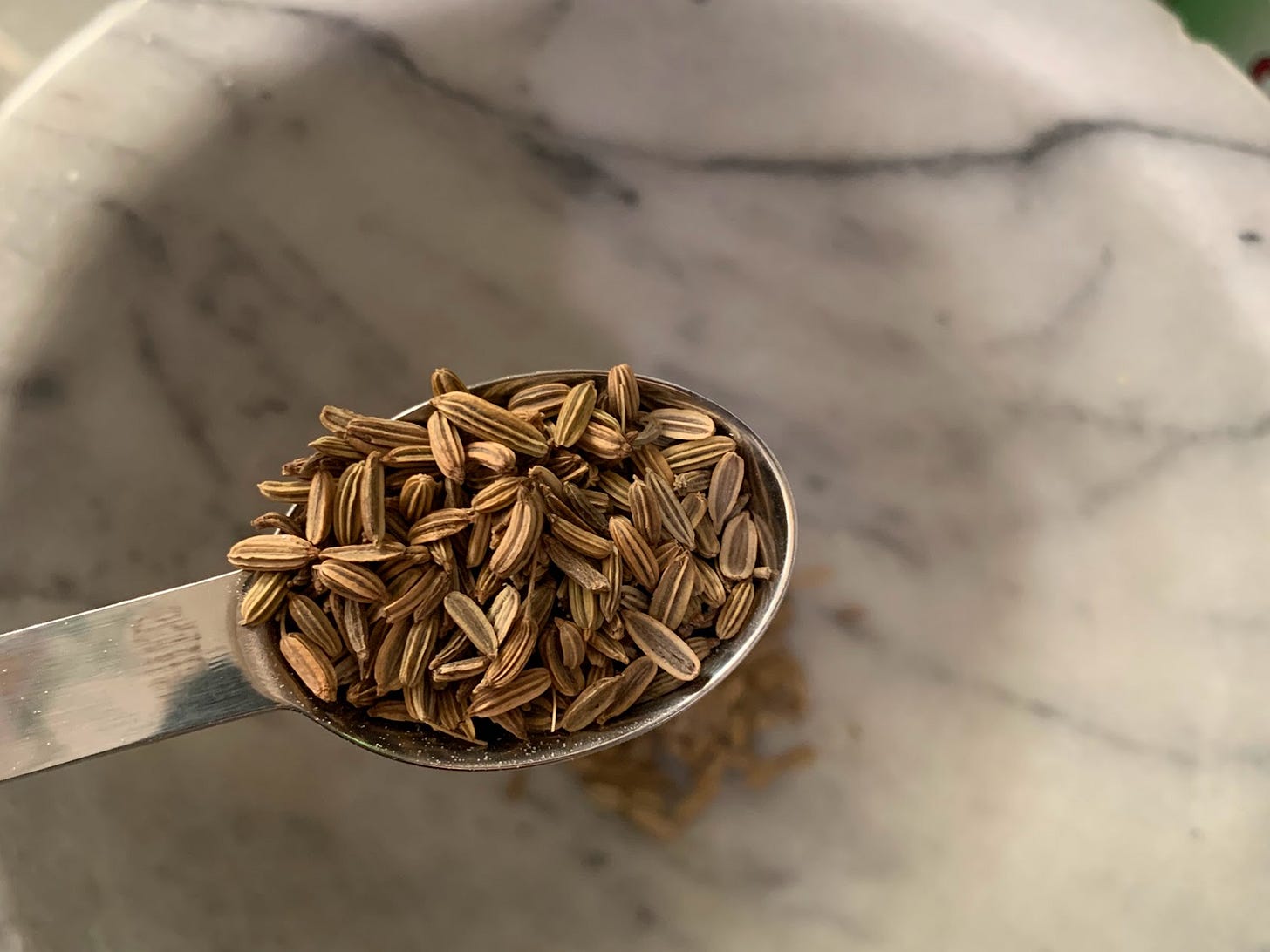
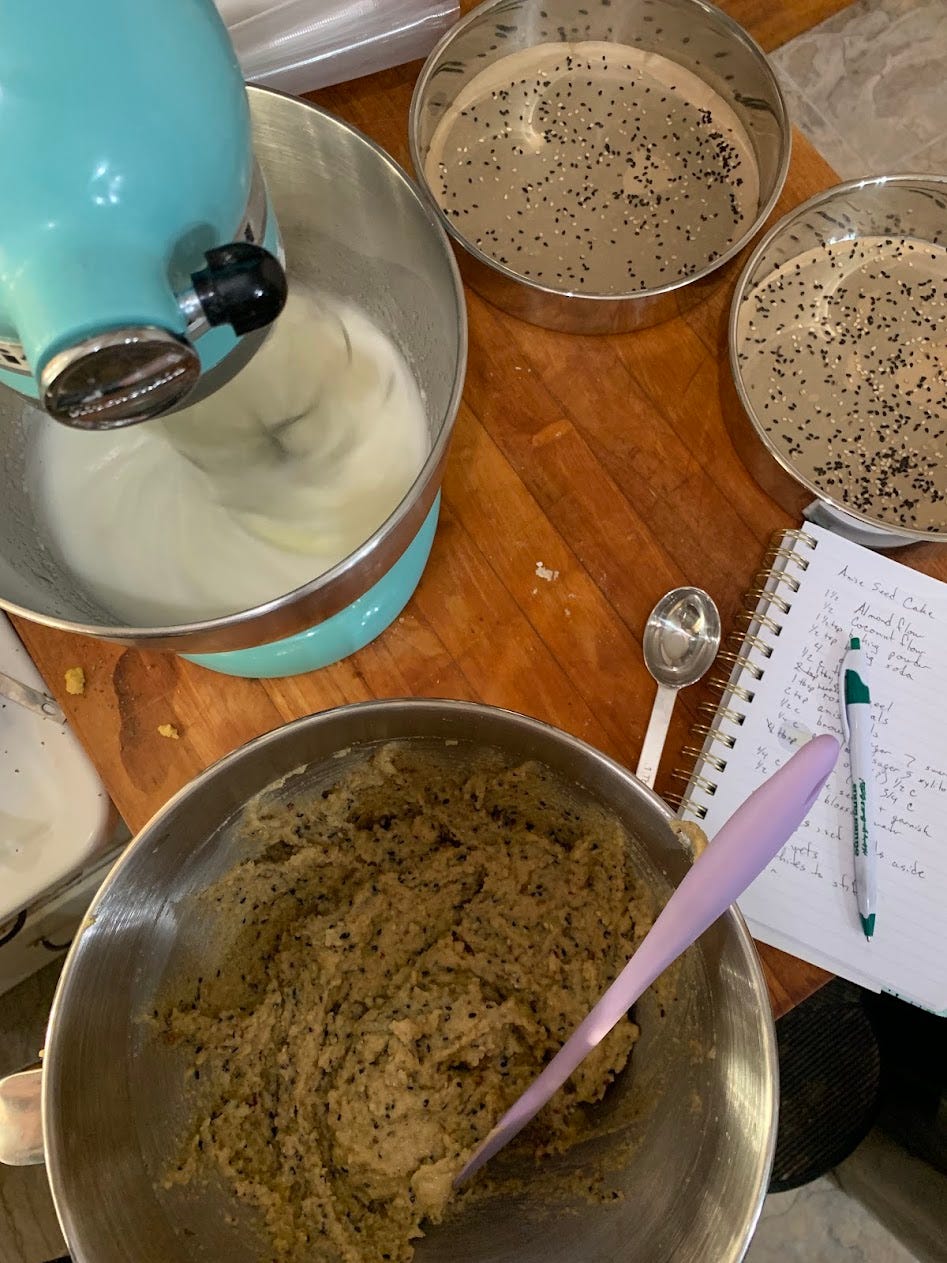
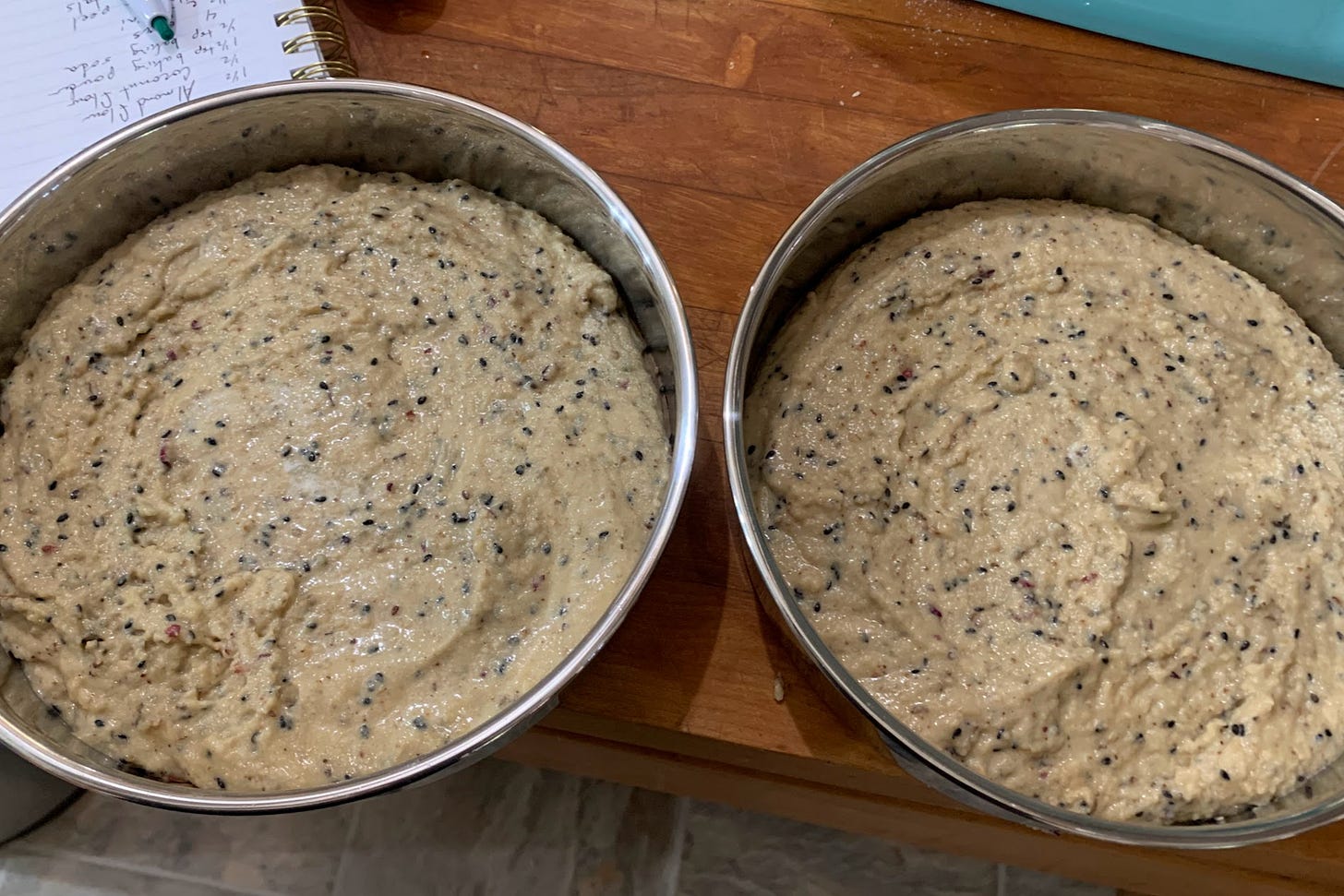
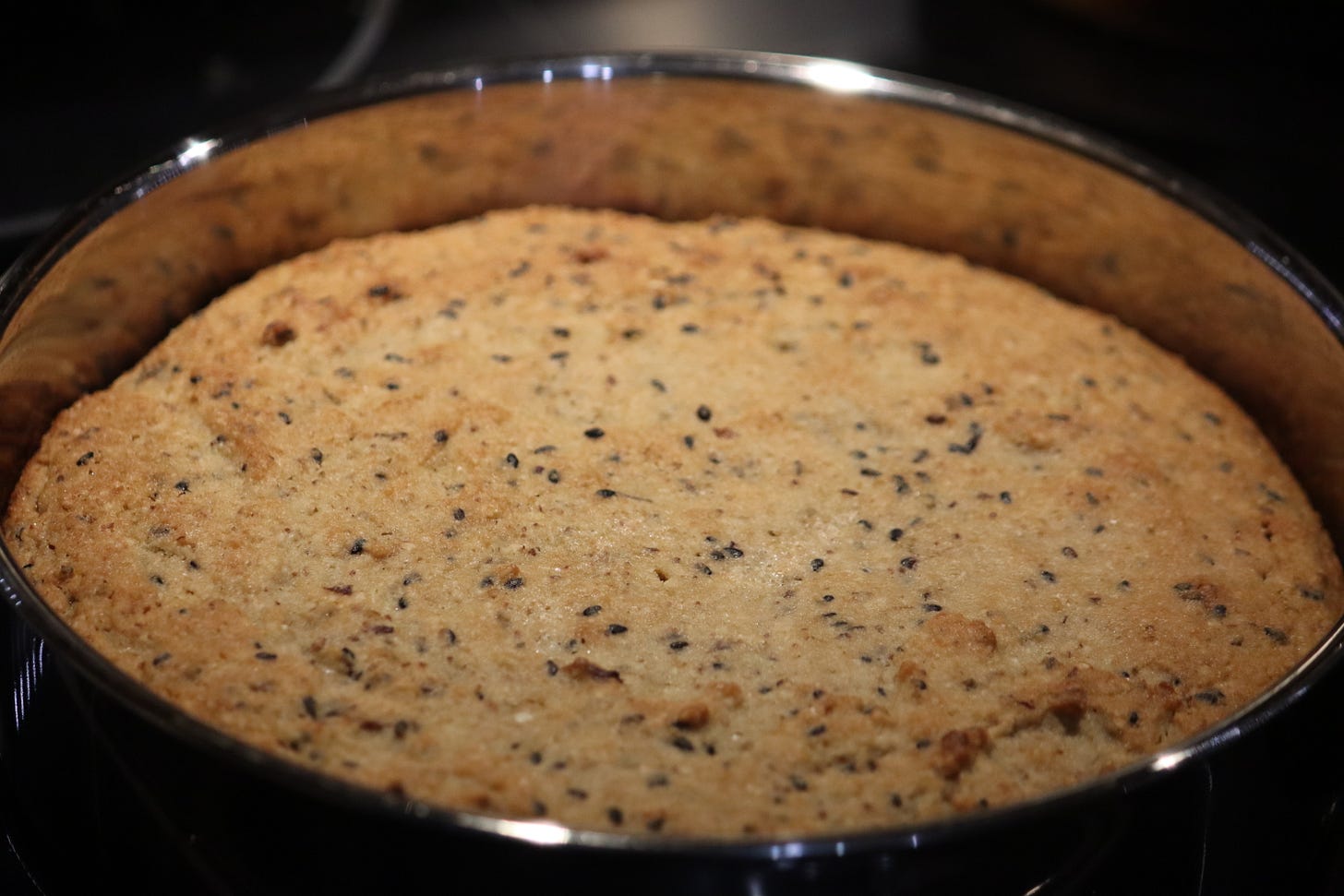
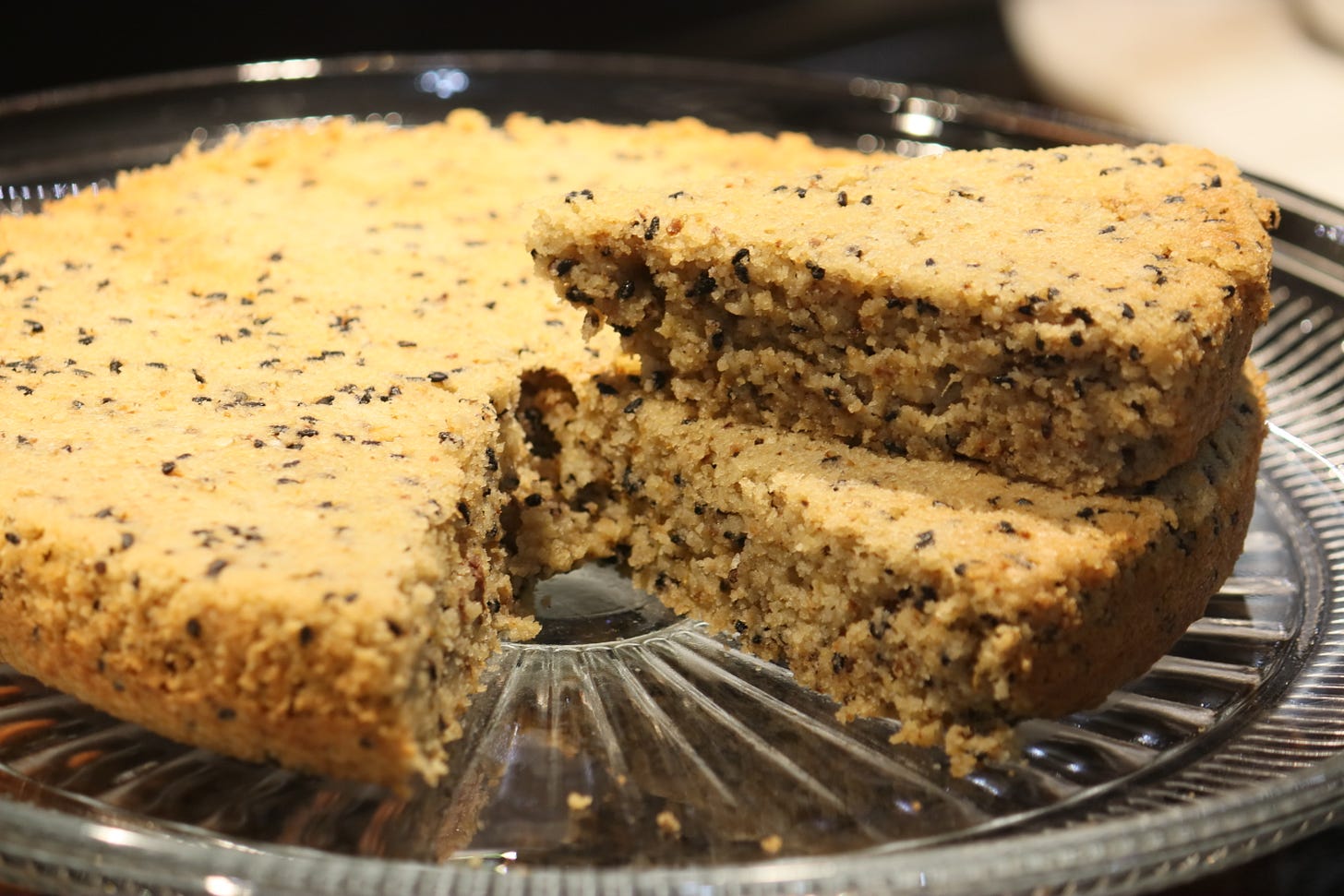
There is a Chinese regional cooking style which I am told is Hong Long, which uses anise as a seasoning in meat dishes. But that would appear to paint the lily and gild the sunset.
My mom’s side of the family makes special breads at Easter that look like nesting birds and braided pretzels. They have ground star anise in the dough, and they taste delicious.